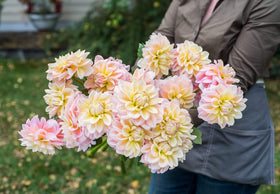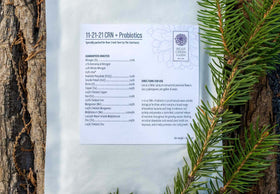Wreaths—a circle of dried botanicals hung on a door, perhaps evoking the coziness of autumn or the nostalgia of a handmade holiday. But the truth is, these delicate arrangements carry a history as old as civilization itself, with significance that spans culture, botany, and time. From the ancient Romans to today’s homegrown artists, the wreath has persisted as an emblem of cycles—of seasons, of life and death, of renewal. So why, out of all possible forms, does this circular motif continue to hold such fascination?
The wreath’s shape reflects nature’s unbroken cycles, but more than that, it mirrors how the plants within it evolve, even as they dry and age. A wreath promises life, growth, eternity—yet it’s often made from things that are, quite literally, past their prime.
Lavender: Enduring Elegance from Ancient to Modern Times
Take lavender, for instance. Known for its soothing scent and graceful purple spikes, lavender has long been revered—not just as a perfume, but as a healer and a sleep aid. Its appeal never fades, and perhaps that’s why it’s such a favored choice in wreaths. It holds its beauty long after it’s been cut and dried. As moisture evaporates, lavender’s oils become more concentrated, deepening its aroma. There’s something remarkably poignant about this transformation—what starts off as fresh mellows into something deeper, more complex, yet no less powerful. It’s the botanical equivalent of aging gracefully.

Air-Drying Flowers
Dried flowers themselves may seem like a relic of Victorian times, but there’s a quiet artistry—and yes, a bit of science—behind the practice. When flowers dry, the process is more than just dehydration; it’s a biological transformation. The petals, leaves, and stems lose their moisture, but retain a form that’s often more delicate, more nuanced than when they were alive. Each flower behaves differently—zinnias hold their shape with a papery fragility, while strawflowers maintain a stiff, almost everlasting brilliance. Lavender, of course, becomes more concentrated, its oils intensifying even as its structure remains intact. The key to air-drying is knowing the balance between water and air, between time and patience.
What we’re left with is a paradox: dried flowers are both past their peak and at the height of their preservation. In wreaths, this tension creates a subtle yet stunning display. It’s about celebrating the passage of time, not resisting it.
Why the Wreath Endures
So why do we keep making wreaths, year after year, season after season? Because a wreath—especially one made with dried botanicals—is more than just decoration. It’s an homage to nature’s cycles, to the beauty in decay and transformation. In a world obsessed with the new and the fleeting, crafting a wreath from dried flowers is an act of mindfulness. It’s about creating something that lasts, something that honors both the present and the past.
Each snip of lavender, each carefully placed zinnia, is a small act of care, of intention. We take what was once fresh, let it age, and form it into something enduring. And in doing so, we acknowledge that beauty doesn’t always lie in perfection. Sometimes, it’s in the imperfections—the brittle edges, the faded colors, the gentle reminder that time has passed.




